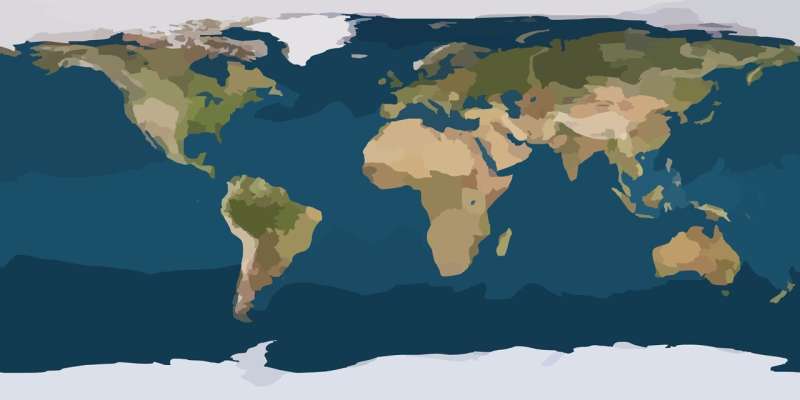This article has been reviewed according to Science X's editorial process and policies. Editors have highlighted the following attributes while ensuring the content's credibility:
fact-checked
peer-reviewed publication
trusted source
proofread
'New El Niño' discovered south of the equator

A small area of the southwestern Pacific Ocean, near New Zealand and Australia, can trigger temperature changes that affect the entire Southern Hemisphere, a new study has found.
The new climate pattern, which shares some characteristics with the El Niño phenomenon, has been named the "Southern Hemisphere Circumpolar Wavenumber-4 Pattern."
Unlike El Niño, which starts in the tropics, this new pattern begins in the mid-latitudes. The study, published this month in the Journal of Geophysical Research: Oceans, highlights how important the interaction between the ocean and atmosphere is for our climate.
Balaji Senapati, lead author of the study at the University of Reading, said, "This discovery is like finding a new switch in Earth's climate. It shows that a relatively small area of the ocean can have wide-reaching effects on global weather and climate patterns.
"Understanding this new weather system could greatly improve weather forecasting and climate prediction, especially in the Southern Hemisphere. It might help explain climate changes that were previously mysterious and could improve our ability to predict extreme weather and climate events."
Hidden in plain sight
Researchers used sophisticated climate models to simulate 300 years of climate conditions. This model combines atmospheric, oceanic, and sea-ice components to create a comprehensive representation of Earth's climate system. By analyzing this simulated data, the team identified a recurring pattern of sea surface temperature variations circling the Southern Hemisphere.
The weather pattern works like a global chain reaction. This pattern creates four alternating warm and cool areas in the oceans, forming a complete circle in the Southern Hemisphere. It starts near the ocean of New Zealand and Australia. When the ocean temperature changes in this small area, it triggers a ripple effect in the atmosphere. This creates a wave-like pattern that travels around the entire Southern Hemisphere, carried by strong westerly winds.
As this atmospheric wave moves, it affects ocean temperatures, creating the four warm and cool areas.
The ocean plays a big role in this process. When the atmospheric wave changes wind patterns, it affects how heat moves between the ocean and air. This changes the depth of the ocean's upper layer of warmer water, which can make temperature changes stronger or weaker.
This new pattern happens independently of other known weather systems in the tropics, such as the warming El Niño pattern of currents and trade winds, or its opposite, cooling phase, La Niña. This suggests it has always been a part of Earth's climate, but it has only just been noticed.
More information: Balaji Senapati et al, Southern Hemisphere Circumpolar Wavenumber‐4 Pattern Simulated in SINTEX‐F2 Coupled Model, Journal of Geophysical Research: Oceans (2024). DOI: 10.1029/2023JC020801
Journal information: Journal of Geophysical Research
Provided by University of Reading




















